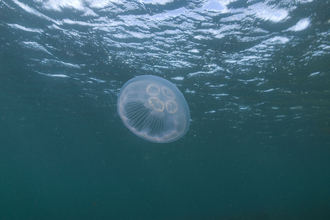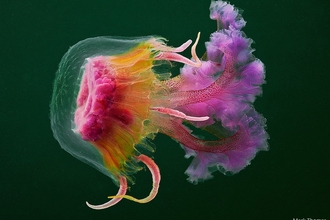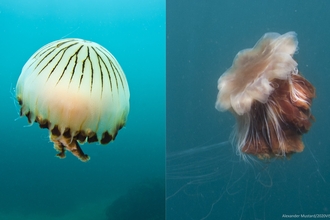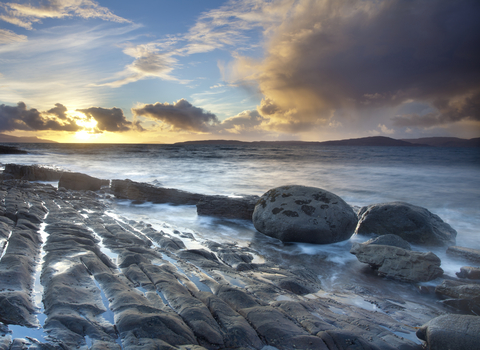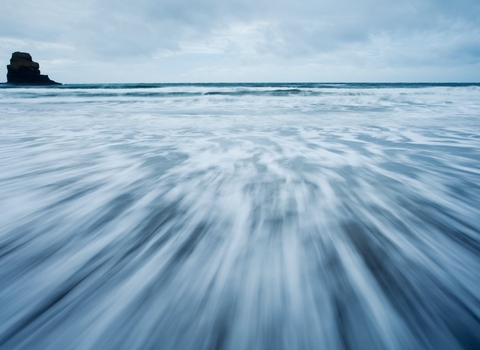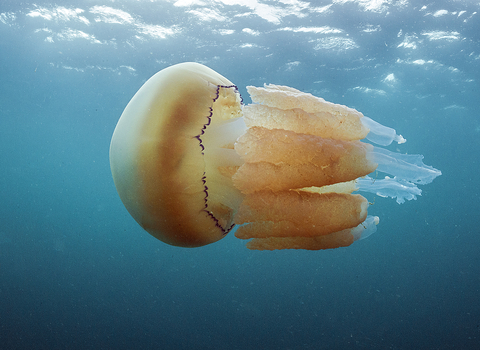
Barrel jellyfish ©marknthomasimages.co.uk
Barrel jellyfish
Giants of the jellyfish world, these incredible creatures are the UK’s largest jellyfish! They can grow to the size of dustbin lids – giving them their other common name: dustbin-lid jellyfish.

